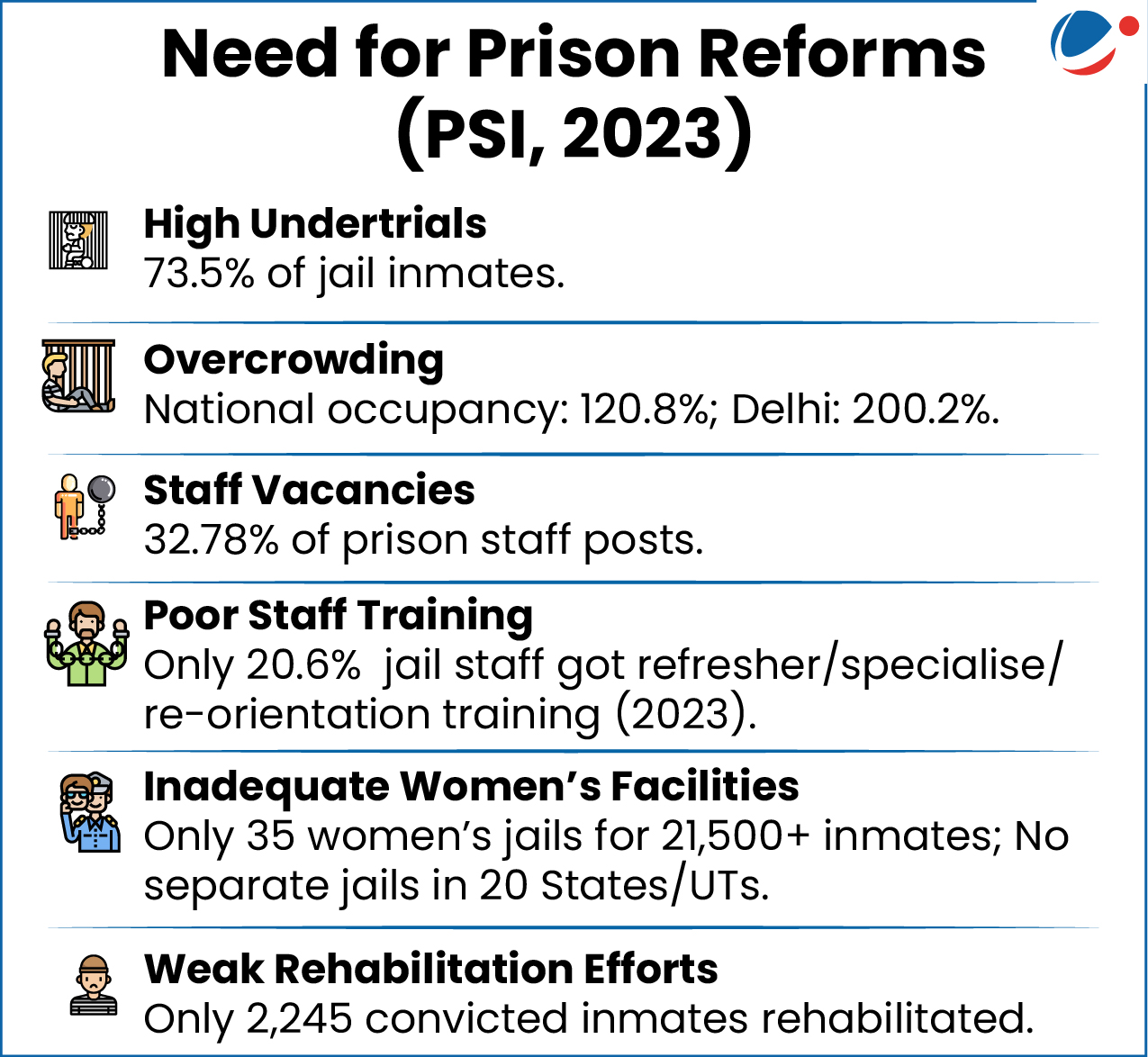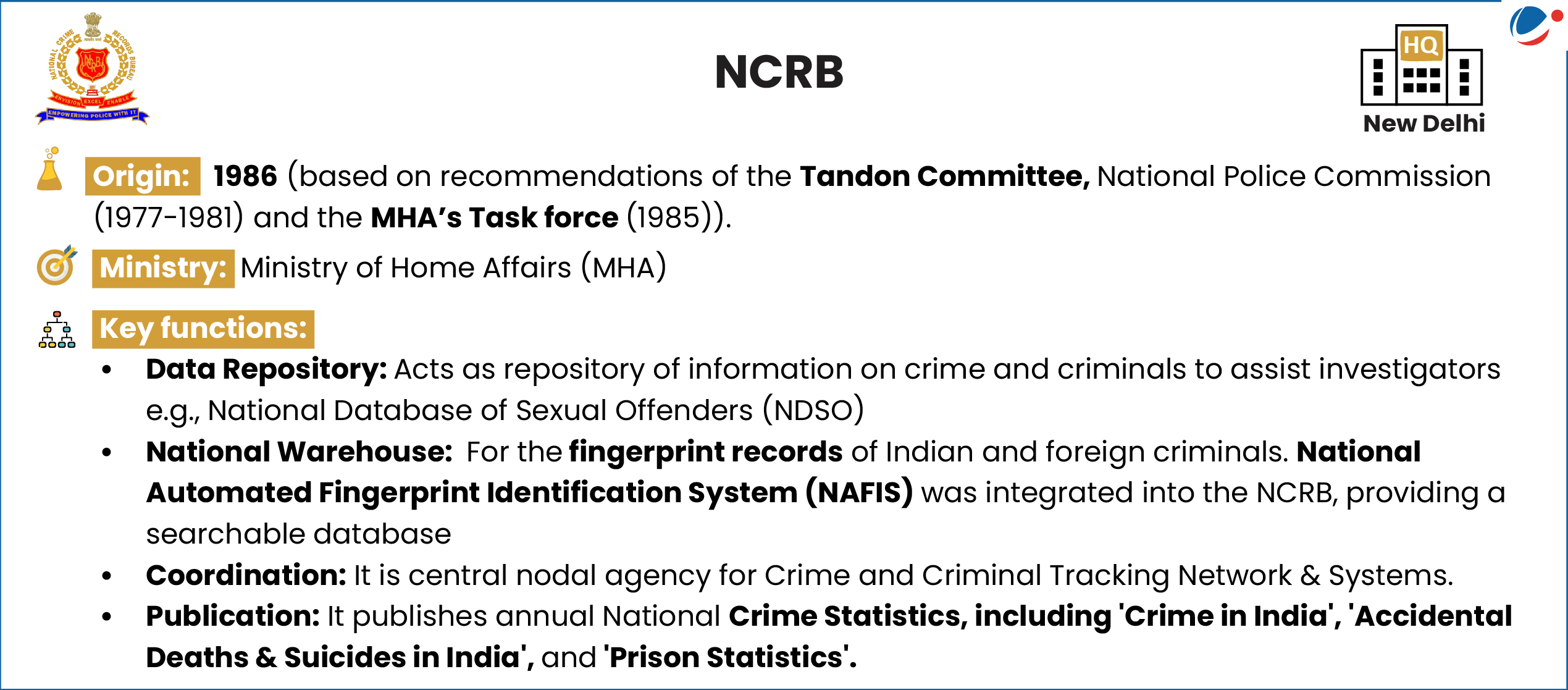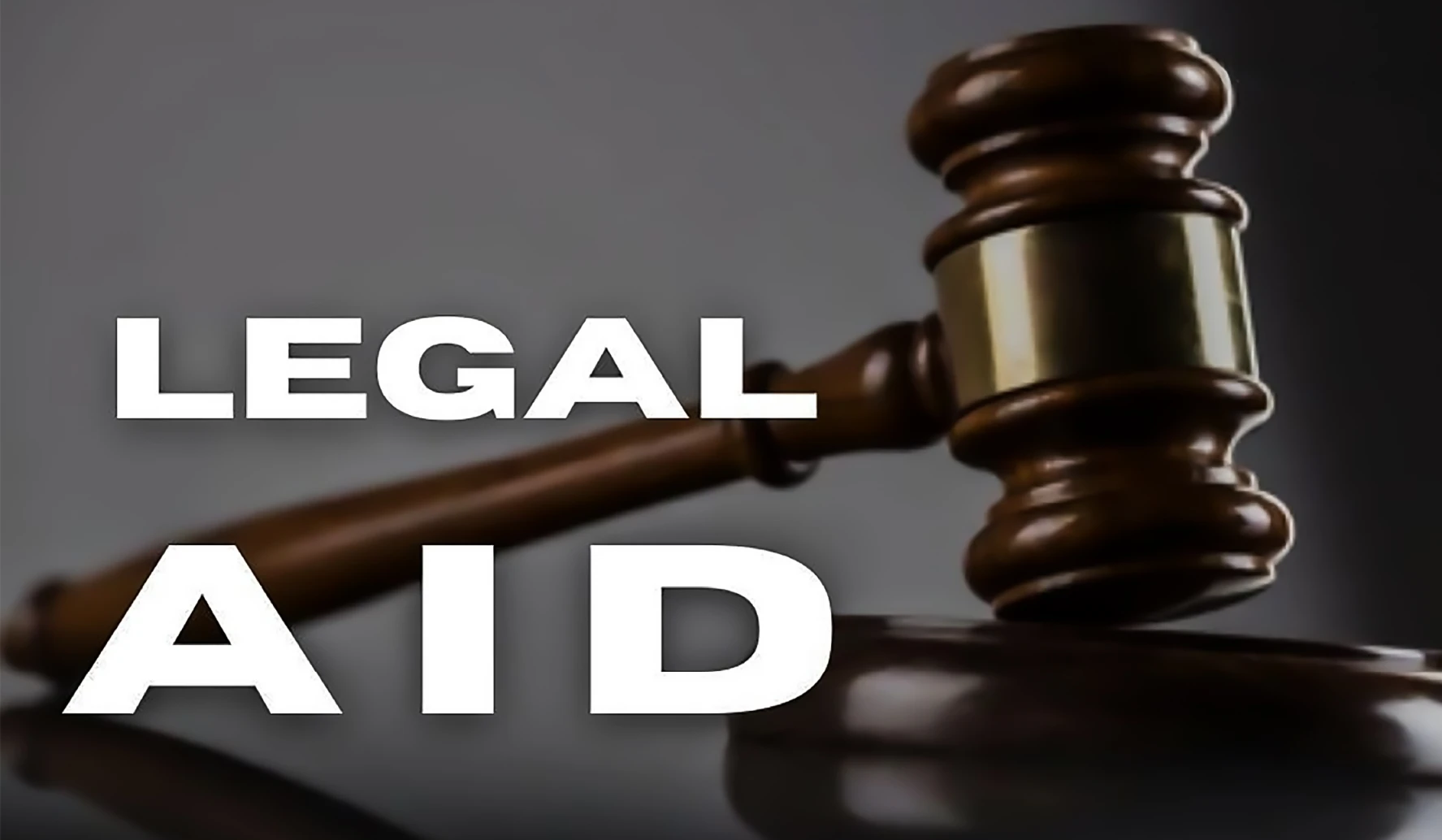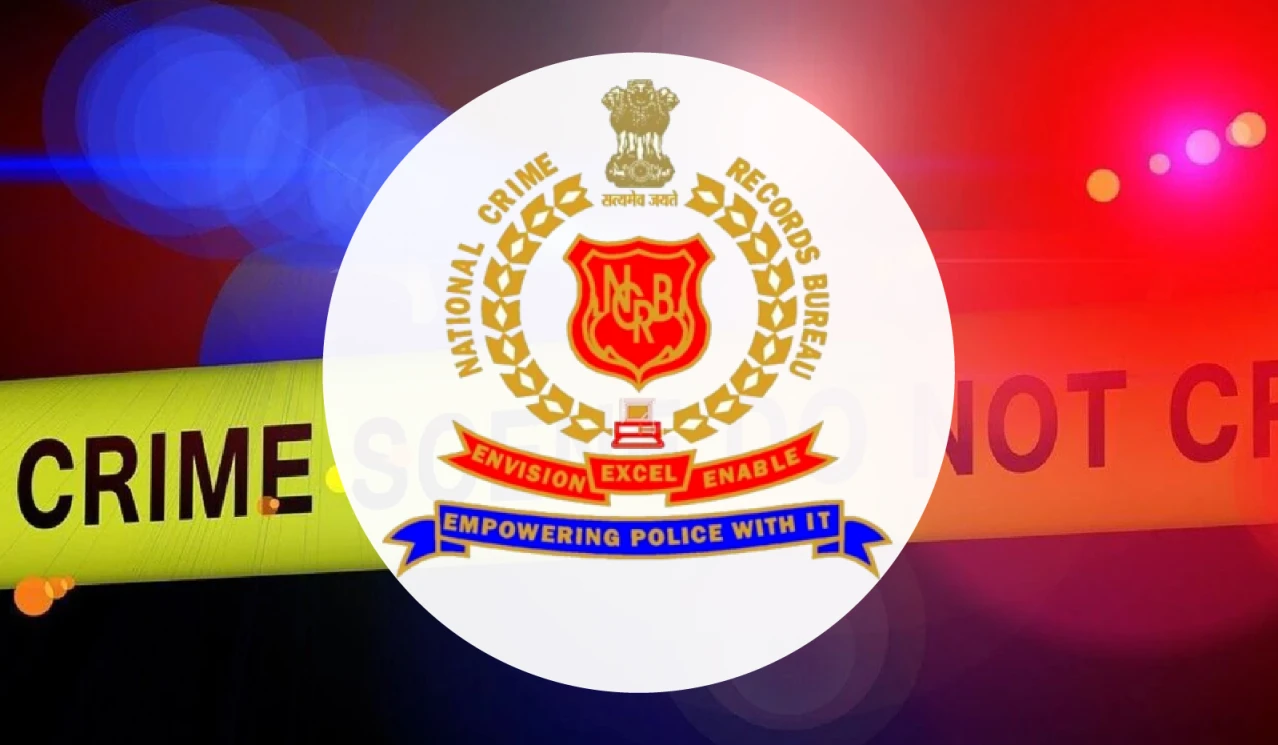Why in the News?
Recently, National Crime Records Bureau (NCRB) has released Prison Statistics India (PSI) 2023 Report.

Governance of Prisons in India
- Prisons/ Persons detained therein is a 'State' subject (Entry 4) under Schedule VII of the Constitution. Therefore, administration and management of prisons and prisoners is the responsibility of respective State Governments/ UT administrations.
- Union Ministry of Home Affairs has also been providing regular guidance and support to States and UTs on various issues relating to prison administration.
- Earlier, prison was governed by Prison Act, 1894 and Prison manuals of respective state governments.
- MHA has prepared Model Prisons and Correctional Services Act, 2023 which may serve as a "guiding document" for States to reform British era laws.
- Model Prisons Act, 2023 assimilates relevant provisions of the Prisoners Act, 1900 and the Transfer of Prisoners Act, 1950.
Judicial Pronouncements related to Prisons
|
Measures taken for Prison Reforms
- MHA amended Model Prison Manual, 2016 rules and Model Prisons and Correctional Services Act, 2023: To address caste-based discrimination within prisons across country.
- The amendments have been made in compliance with Supreme Court order on caste-based discrimination of prisoners in Sukanya Santha vs. UoI & Others Case.
- Model Prison Manual 2016 aims at bringing in basic uniformity in laws, rules, and regulations governing administration of prisons and management of prisoners all over the country.
- Support to Poor Prisoners Scheme: It provides financial assistance to States/UTs for extending relief to poor prisoners who are unable to secure bail or release from prison due to non-payment of fine, on account of financial constraints.
- E-Prison Project: It supplements Prisoner Information Management system, developed by National Informatics Centre, which provides a centralized approach for recording and managing prisoner information and generating different kinds of reports.
- Modernization of Prison Project: It aims to fill existing gaps in security infrastructure of jails and provide new security equipments to jails in line with modern day technologies.
- FASTER (Fast and Secured Transmission of Electronic Records) system of Supreme Court: To resolve delays in communication of bail orders from courts to prison authorities.
Way Forward/ Recommendations
- Follow Supreme Court's three Principles regarding imprisonment and custody:
- First, a person in prison does not become a non-person.
- Second, a person in prison is entitled to all human rights within the limitations of imprisonment.
- Third, there is no justification for aggravating the suffering already inherent in the process of incarceration.
- Recommendations of Parliamentary Committee on Home Affairs:
- Utilise technology like trackable bracelets to keep track of prisoners on bail.
- Renovate colonial-era prisons to preserve their heritage and earn revenue by encouraging tourism.
- State Governments may create a Prison Development Fund for the welfare activities of the prisoners.
- Recommendations of Justice A.N. Mulla Committee:
- Setting up an All India Service called Indian Prisons & Correctional Service.
- After-care, rehabilitation and probation to be an integral part of prison service.
- Press and public to be allowed inside prisons and allied correctional institutions periodically.
- Undertrials in jails to be reduced to bare minimum and they be kept away from convicts.
- Recommendations of Justice Amitava Roy Committee:
- Establishment of special fast-track courts to handle petty offenses and cases pending for over 5 years.
- Use of Video Conferencing for the production of senior citizens and sick prisoners in courts.
- Establishment of exclusive women's prisons, and medical wards for female inmates; formulation of welfare schemes for transgender prisoners etc.
- Mandatory segregation of undertrials, convicts, and first-time offenders within prisons to reduce violence.
Conclusion
The Model Prisons and Correctional Services Act, 2023, and recent judicial pronouncements reflect a growing national consciousness that justice must extend beyond punishment to encompass dignity, reform, and rehabilitation. By harnessing technology, strengthening human resources, and fostering empathy-driven correctional practices, prisons can evolve into true reformative institutions that prepare individuals for constructive re-entry into society.








